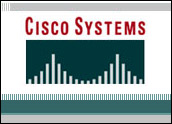
Cisco on Thursday announced the Virtualization Experience Media Engine (VXME), new software that will extend its Jabber unified communications application to virtualized workspace environments.

VXME will initially be available on thin clients from Cisco. Support for Dell Wyse thin clients, Windows-based thin clients and Windows PCs will follow.
PBXs, which have been the traditional foundation for integrated communications, are aging.
“Most are decades out of date,” remarked Rob Enderle, principal analyst at the Enderle Group.
Extending Jabber would be a way to address integrated thin client communications with a solution that’s compliance-friendly, he told TechNewsWorld.
It would also simplify the management of PCs and employees’ own mobile devices for companies that jump on the BYOD (Bring Your Own Device) bandwagon, Enderle noted, and provide a means for updating voice and video communications in one relatively simple step.
VXME “is primarily a benefit for companies that currently use unified communications systems or are planning to upgrade from solutions offered by Microsoft or IBM,” Maribel Lopez, principal analyst at Lopez Research, told TechNewsWorld.
What VXME Will Do
Cisco’s VXME will let virtual desktop users access Jabber’s enterprise-class collaboration capabilities — such as voice and high-definition video, presence and instant messaging — as part of Cisco’s Virtualization Experience Infrastructure (VXI).
VXI “is an architecture to deliver the best possible voice and video services to virtual desktops,” Grace Kim, the company’s marketing manager for collaboration platforms, told TechNewsWorld.
The VXME software can do voice and video processing locally on thin-client hardware, so companies won’t have to purchase laptops or PCs for their users, she added.
“Some firms are already looking to virtualize the [end user] environment,” Lopez explained. “The concept is to make software that was designed for a PC work in a virtualized environment in a more efficient and effective way.”
No New Brooms, Please
Businesses can retain existing data networks, because the Cisco Unified Communications Manager (CUCM) will leverage these to build out an enterprise-wide collaboration solution, Kim claimed.
“CUCM, along with network optimization technologies and tools such as QoS and Cisco Medianet, enables customers to get the best quality voice and video using their existing infrastructure,” she added.
Businesses can retain users’ existing desktops, Kim pointed out.
“Many companies are piloting virtualized desktops for their users for a number of reasons related to security, hardware cost savings and maintenance. For [them], Cisco Jabber in virtual environments and the new accessories help maintain that traditional user experience,” she said. “However, Cisco Jabber and the accessories will work on traditional PCs.”
The accessories Kim referred to are a new keyboard from Logitech, the K 725-C; and a new headset from Jabra, the Handset 450. Both were made to work seamlessly together and with Jabber, but they are optional, she pointed out.
Why Splurge on Cisco?
Cisco’s not known for competing on price, but “optimally, you should have components that are aware and can automatically reconfigure to assure quality of service,” said Enderle.
“Going Cisco end-to-end would be the best way to assure this,” he maintained. “Introducing other vendors’ technology could degrade the experience, but depending on how well that equipment interoperates with Cisco’s, this might not be catastrophic.”
Value for money is the key, Enderle emphasized. Companies might be willing to pay for Cisco’s products despite the price “if the result is cost-effective in terms of management savings and reliability.”



















































